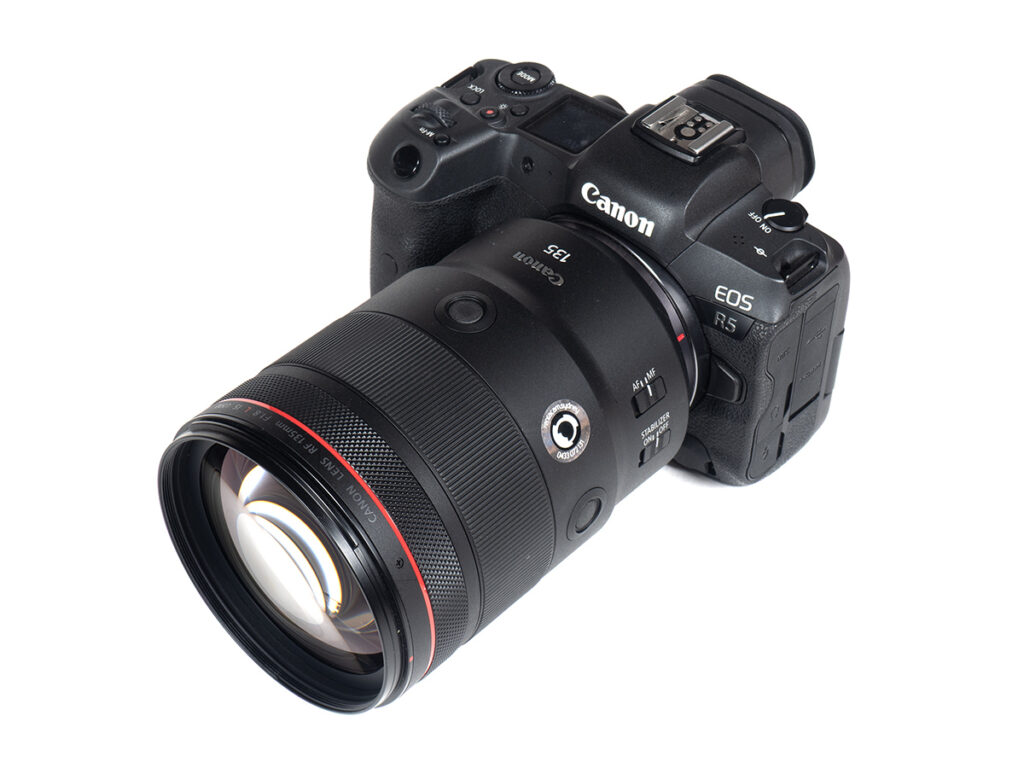So while we are at reviewing 135mm lenses, let’s not forget about this one – the Canon RF 135mm f/1.8 L IS USM. It is also interesting because it’s the only lens in its class featuring an image stabilizer. As such, it deserves to be a little more expensive than other lenses. In the US, it’s still “comparatively affordable” at around $2100 USD (probably not tariff-adjusted yet), whereas in other markets it’s bizarrely expensive. In Australia, it is almost 50% more expensive than the Sony FE 135mm f/1.8 GM. Anyway …
Coming back to the lens itself, the build quality is in line with what we have seen with other (black-colored) professional-grade RF lenses. The lens body is made of Canon’s engineered plastics, which you may or may not like – the finish is a bit too slippery in our book. However, it’s certainly sturdy and, of course, sealed against the elements. The focus ring turns smoothly, and there’s the usual customizable control ring at the front of the lens. A barrel-shaped lens hood is provided.
The AF is based on Canon’s Nano USM, which is both very snappy and silent. The image stabilizer is good for a gain of 5 to 8 f-stops (claimed), depending on whether your camera features an IBIS. As usual, take the statement with a grain of salt during real-life shooting, but it’s close depending on your coffee intake.
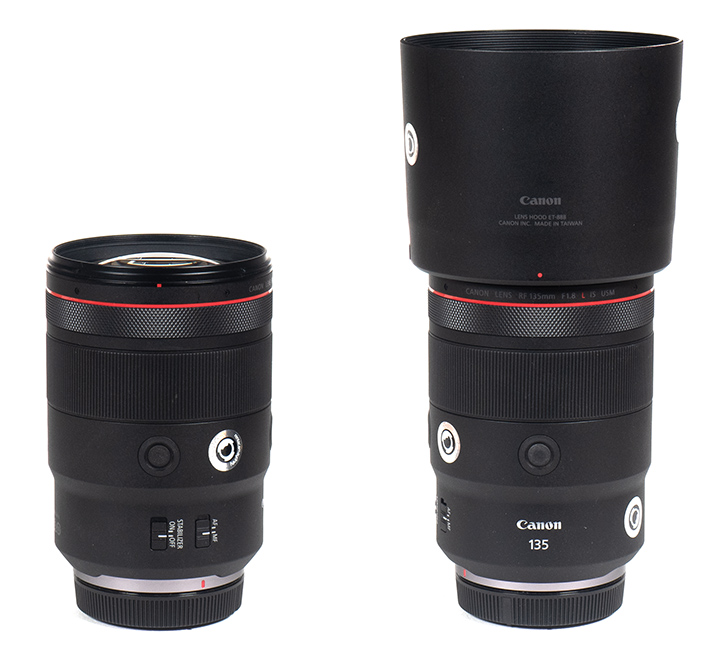
| Specifications | |
|---|---|
| Optical construction | 17 elements in 12 groups (3x UD) |
| Number of aperture blades | 9 (rounded) |
| min. focus distance | 0.7m (max magnification 0.26x) |
| Dimensions | φ89.2 x 130.3 mm |
| Weight | 935g |
| Filter size | φ82mm |
| Hood | barrel-shaped (bayonet mount, supplied) |
| Other features | image stabilizer (5 to 8 f-stop claimed efficiency depending on camera) weather-sealing control ring focus stop button fluorine coating |
Distortions
The Canon RF 135mm f/1.8 L IS produces a slight amount of pincushion distortion in RAW images, and the remaining traces are removed via auto-correction if activated.
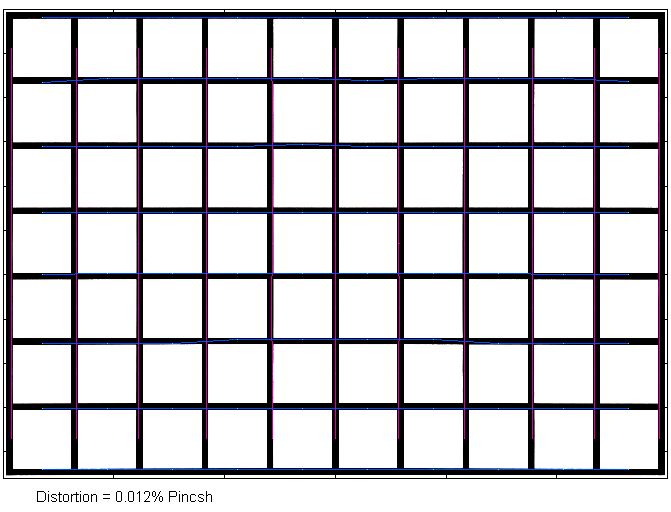
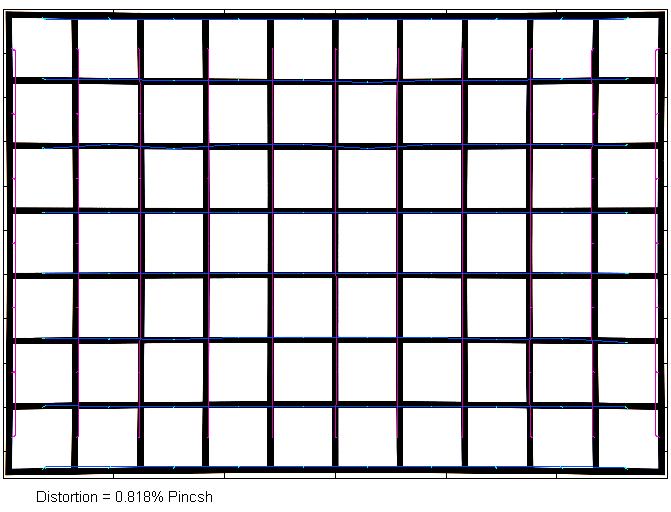
Vignetting
Ultra-large aperture lenses tend to produce very high vignetting at max aperture. This also applies to the Canon lens with a light falloff of more than 2 EV (f-stops) in RAW images – somewhat higher than average in this class. The original vignetting is almost gone from f/5.6.
The profile correction reduces this to a negligible degree even straight from the maximum aperture.

MTF (resolution) at 45 megapixels
The Canon lens delivered an outstanding resolution performance in the lab across all relevant aperture settings and across the image field. Stopping down improves the quality only marginally. This is probably the best result that we have seen from any tested lens so far.
The field curvature is negligible. The centering quality of the tested sample was very good.
Please note that the MTF results are not directly comparable across the different systems!
Below is a simplified summary of the formal findings. The chart shows line widths per picture height (LW/PH) which can be taken as a measure of sharpness. If you would like to know more about the MTF50 figures, you may check out the corresponding Imatest Explanations.
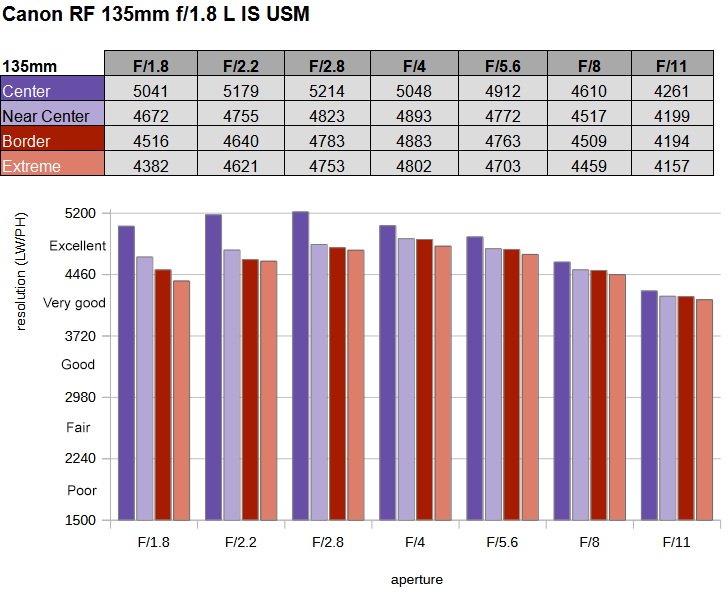
Chromatic Aberrations (CAs)
Lateral CAs have an average width of less than 0.5px at the image borders. This is negligible, even without auto-correction.
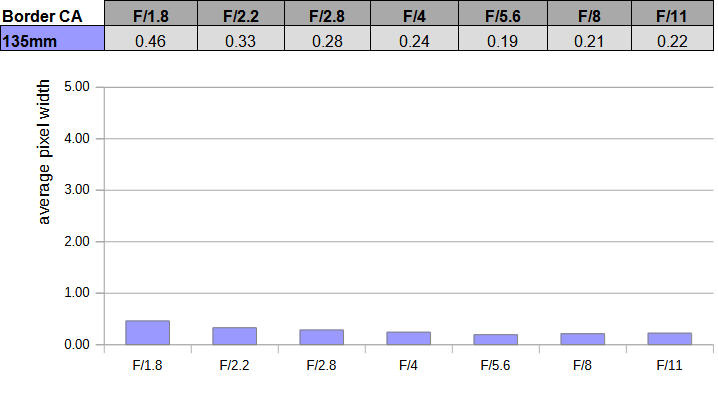
Bokeh
A 135mm f/1.8 lens is primarily about shallow depth-of-field photography, so let’s take a look at the quality of the bokeh.
Out-of-focus highlights are nicely rendered with a very smooth inner zone of the discs and barely any outlining effect. The circular shape of the discs remains intact even at f/4.

When looking at the highlight rendering across the whole image field, we can spot the usual “cat-eye” deterioration from roughly the mid-field into the corners. As usual, stopping down will broaden the zone showing circular discs, and the corner discs are restored at f/4.
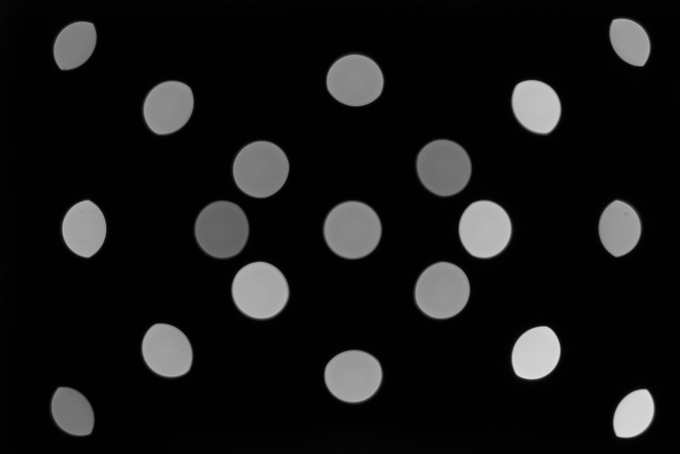

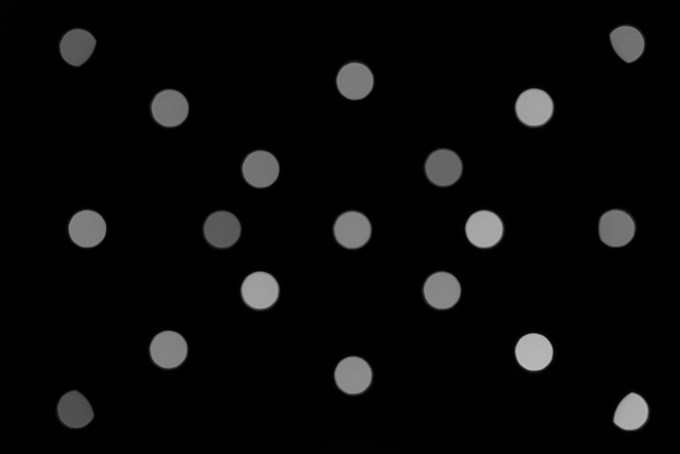
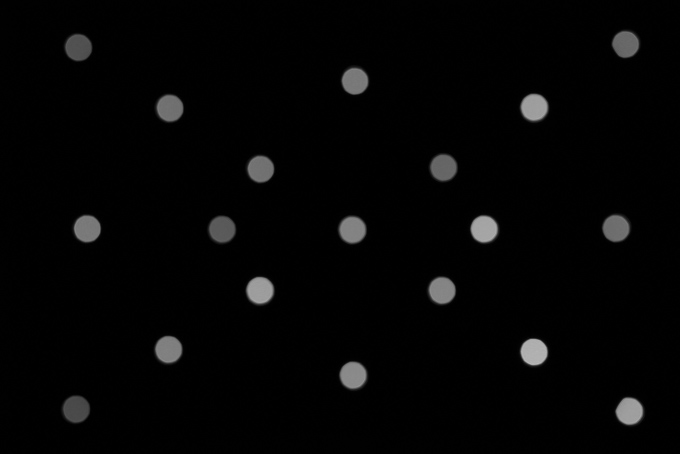
The rendering quality in the focus transition zone is a bit surprising. The background blur – shown to the left below – looks rather nervous. We have seen smoother results from other 135mm f/1.8 lenses here. The usually less important foreground blur is pretty smooth, though.
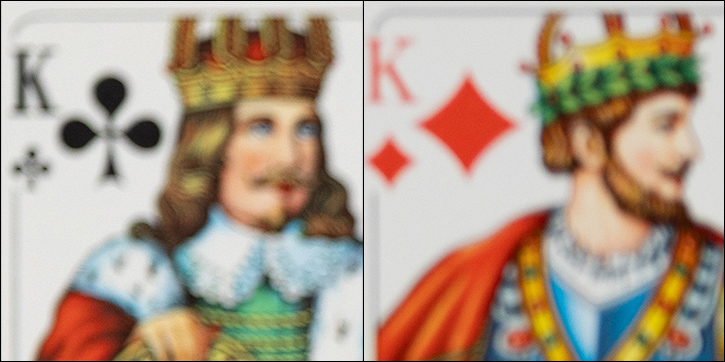
Just to illustrate this in a real-life scene (the image is also available from the download section), check the background blur in the scene below – this doesn’t look ideal with some strangely hard edges in the background blur. And this isn’t an overly difficult scene.
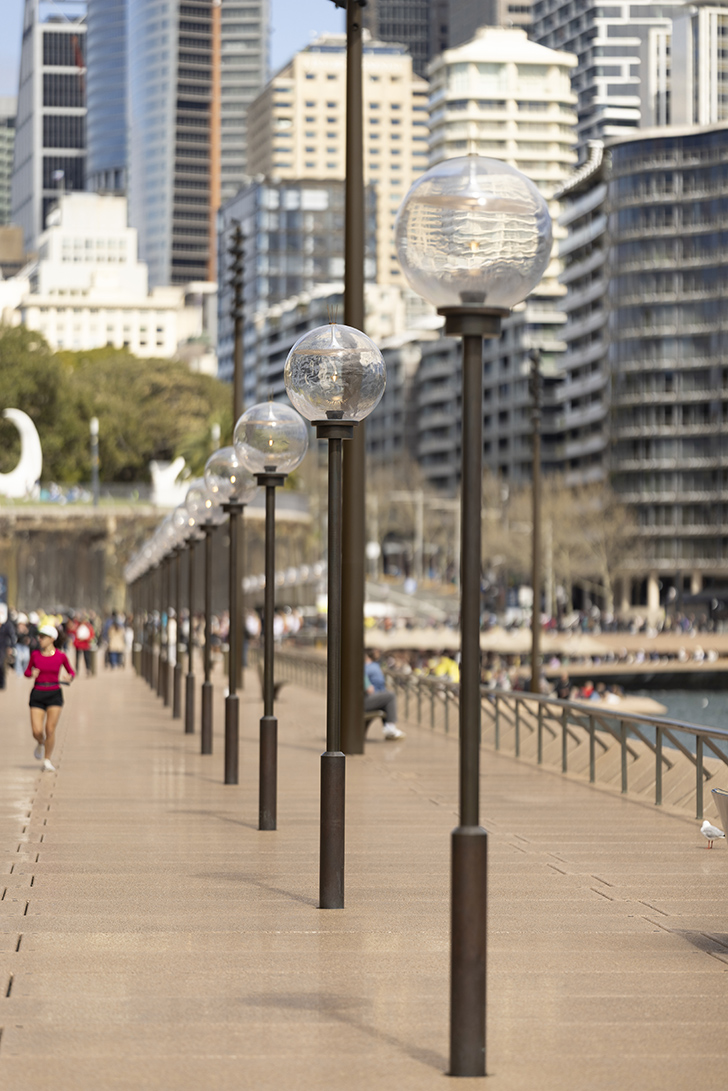
Bokeh Fringing / LoCA
LoCAs, or bokeh fringing, is a color fringing effect on the Z-axis. It shows up with a purplish tint in front of the focus point and a greenish tint behind – and it’s nearly impossible to fully correct in post. The Canon RF 135mm f/1.8 L IS USM does a very good job in this respect. There are only slight traces of fringing visible at f/1.8.
You may also notice that the focus point remains spot-on when stopping down (= no relevant RSAs).
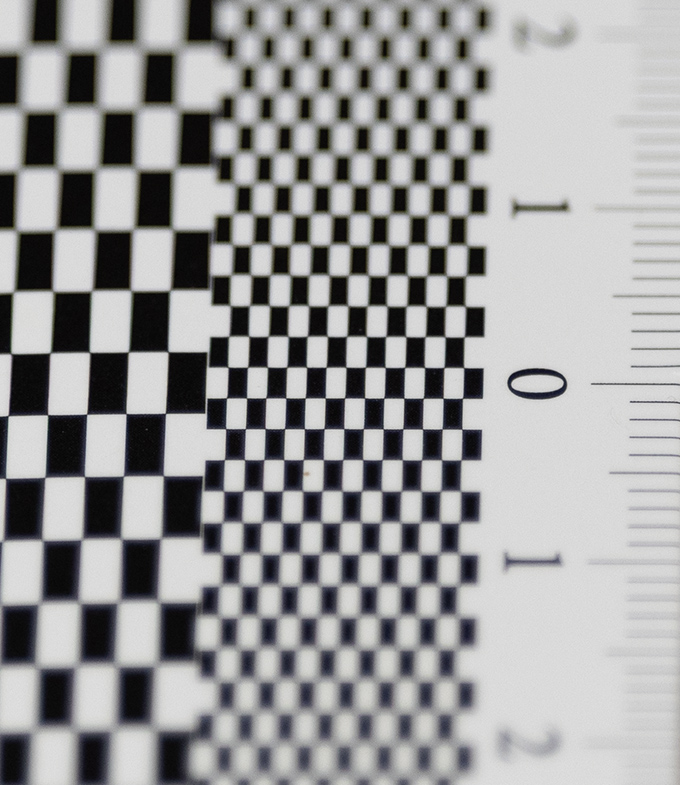
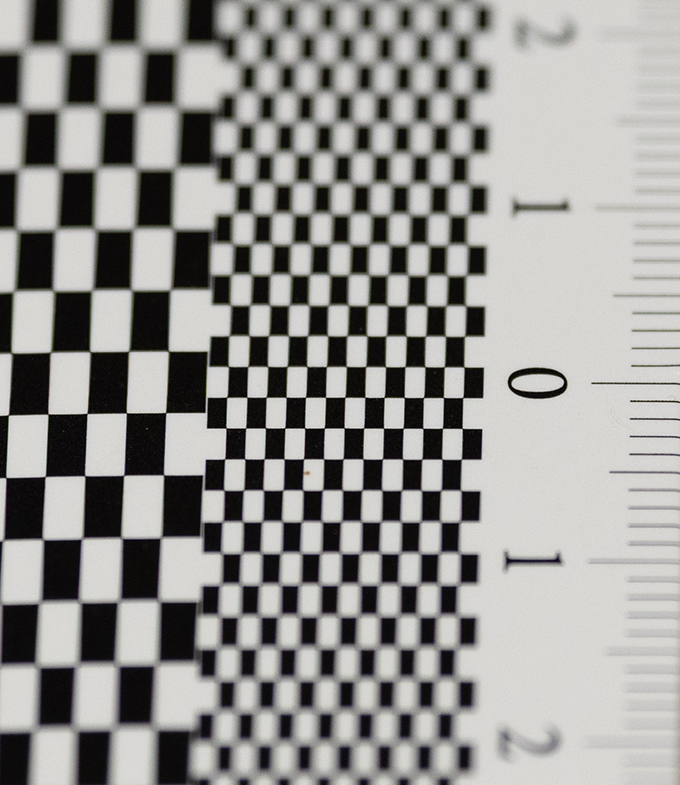
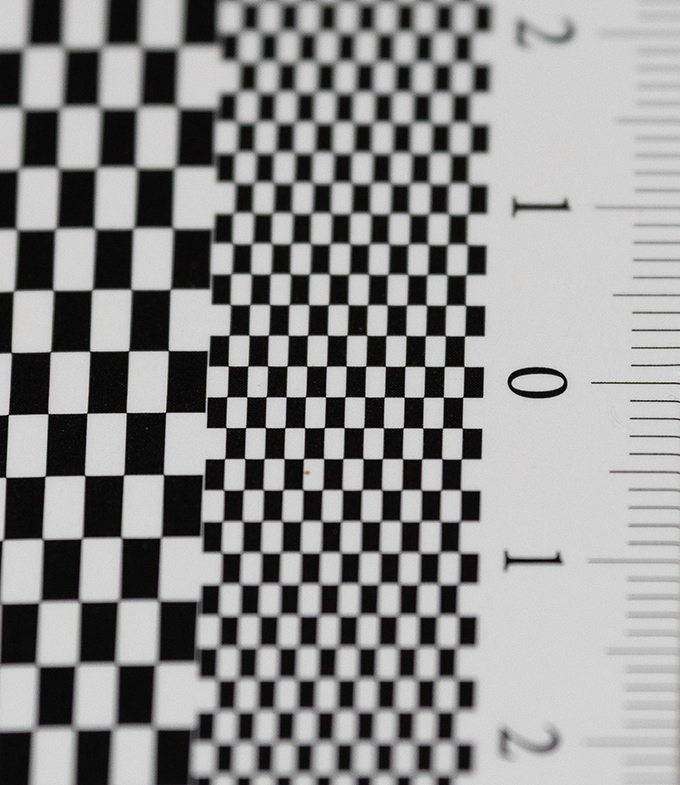

Sample Images
The Canon RF 135mm f/1.8 L IS USM is one of the sharpest - if not the sharpest - lens that we've ever tested. It's brutally sharp at all relevant settings, and that's across the frame. Lateral and axial CAs are very low, and image distortions aren't relevant either, with only marginal auto-correction needed here. The RAW vignetting is comparatively high at f/1.8, although, once again, auto-correction will come to the rescue here. A curious flaw is the "technical bokeh" in the focus transition zone. To be fair here, you will usually use the lens for very shallow depth-of-field photography where this won't be noticed anyway. However, it can be noticed in certain scenes.
The build quality is great, as you can expect from a Canon L lens. It feels, and is, sturdy despite the use of engineered plastics. The AF is very fast, as with all Canon USM lenses. The image stabilizer is a unique value-add for such a lens. Optical IS is more efficient at long focal lengths, and combined with IBIS, it can give you an edge when shooting in darker places.
Overall, Canon delivered an impressive piece of engineering here.
PS: A special callout to the friendly folks from Rent-A-Cam who gave us a little discount when renting the lens. If you live in Sydney/Australia, you may wish to check them out, and don't hesitate to send our greetings.
The Good
- As sharp as it gets
- Great build quality
- Unique image stabilization in its class
The Bad
- Very pricey in certain markets
- The bokeh can be busy in certain scenes
-
Optical Quality
-
Mechanical Quality
-
Price / Performance (depends on where you live)


